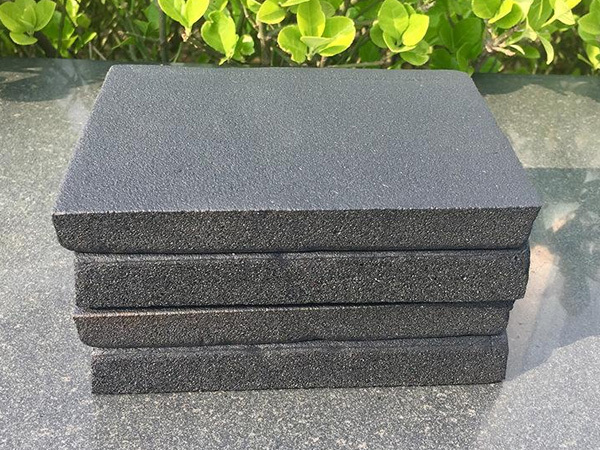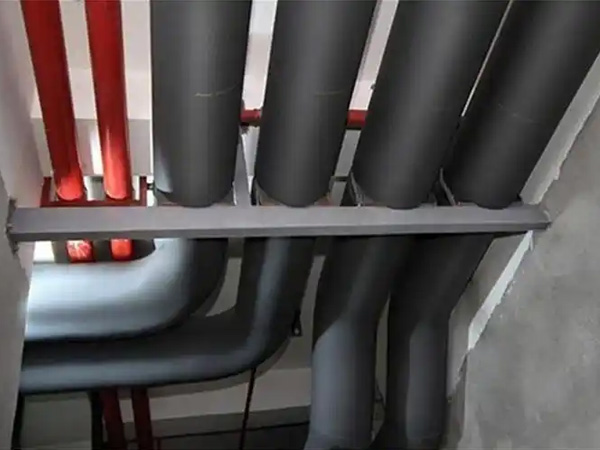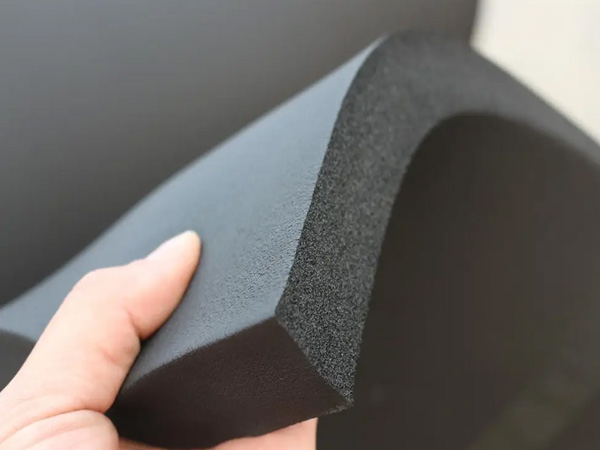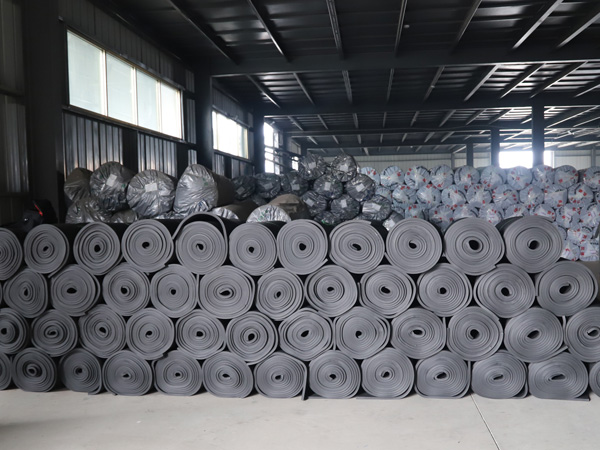Manufacturing Process of Elastomeric Foam (Rubber-Plastic Boards): From Raw Materials to Finished Products
2025-06-18 15:24:20
Manufacturing Process of Elastomeric Foam (Rubber-Plastic Boards): From Raw Materials to Finished Products
Elastomeric foam insulation (commonly called rubber-plastic boards) undergoes a sophisticated production process to achieve its unique thermal and mechanical properties. Below is a step-by-step breakdown of the manufacturing stages:
1. Raw Material Preparation
Base Polymers:
Synthetic Rubber: Nitrile butadiene rubber (NBR) or ethylene-propylene-diene monomer (EPDM) provides flexibility and oil resistance.
Plastic Resins: Polyvinyl chloride (PVC) or polyethylene (PE) enhances structural rigidity.
Additives:
Blowing Agents: Hydrochlorofluorocarbons (HCFCs) or eco-friendly alternatives (e.g., CO₂-based) create closed-cell foam structure.
Flame Retardants: Aluminum trihydrate (ATH) or magnesium hydroxide ensures fire resistance.
Stabilizers & Plasticizers: Improve UV and thermal stability (e.g., phosphite esters).
2. Mixing & Compounding
Banbury Mixer Process:
Polymers, fillers, and additives are blended at 80–120°C to form a homogeneous compound.
Critical Parameters:
Temperature control (±2°C) prevents premature crosslinking.
Mixing time (15–30 mins) ensures even additive distribution.
3. Foaming & Expansion
Continuous Extrusion:
The compound is fed into a twin-screw extruder, where:
Blowing agents decompose at 160–180°C, releasing gas bubbles.
Pressure reduction at the die exit triggers foam expansion.
Alternative Methods:
Autoclave Vulcanization: For high-density foams, using molds under controlled heat/pressure.
4. Crosslinking & Curing
Chemical Crosslinking:
Peroxide catalysts (e.g., dicumyl peroxide) create molecular bonds at 140–160°C, enhancing durability.
Radiation Vulcanization:
Electron beam treatment for precision-controlled crosslinking in thin sheets.
5. Calendering & Shaping
Roller Calendering:
The foamed material passes through heated rollers to achieve uniform thickness (typically 6–50mm).
Surface Texturing:
Embossed rollers may add patterns for improved grip or aesthetics.
6. Cutting & Finishing
Guillotine Cutting:
Sheets are trimmed to standard sizes (e.g., 1m x 2m) or custom dimensions.
Edge Sealing:
Plasma treatment or chemical primers prepare edges for adhesive bonding in field applications.
7. Quality Control & Testing
Density Verification:
Core samples tested per ASTM D3574 (target range: 40–120 kg/m³).
Thermal Conductivity:
Guarded hot plate method (ISO 8301) confirms λ ≤0.038 W/m·K.
Fire Performance:
Cone calorimeter (ISO 5660) and smoke density chamber (ASTM E662) evaluations.
8. Packaging & Storage
Anti-Stick Interleaving:
Polyethylene films prevent sheet adhesion during transit.
Climate-Controlled Warehousing:
Maintains 15–25°C to preserve foam flexibility before shipment.
Key Process Innovations
Sustainable Formulations:
Recent advances use recycled rubber (e.g., end-of-life tires) for 20–30% raw material substitution.
Energy-Efficient Extrusion:
Supercritical CO₂ blowing reduces energy use by 40% vs. traditional HCFC methods.
For specialized applications (e.g., nuclear facilities), radiation-resistant grades incorporate lead oxide additives during compounding.

OurFlame Retardant Rubber Foamis a premium closed-cell elastomeric insulation material engi...

OurRubber Pipe Insulationis a high-performance solution designed specifically for HVAC pipi...

Rubber Foam Insulation Sheet – Product Introduction Premium Flexible Insulation for Therm...

Specially engineered for refrigeration applications, ourElastomeric Rubber Insulationprovid...



